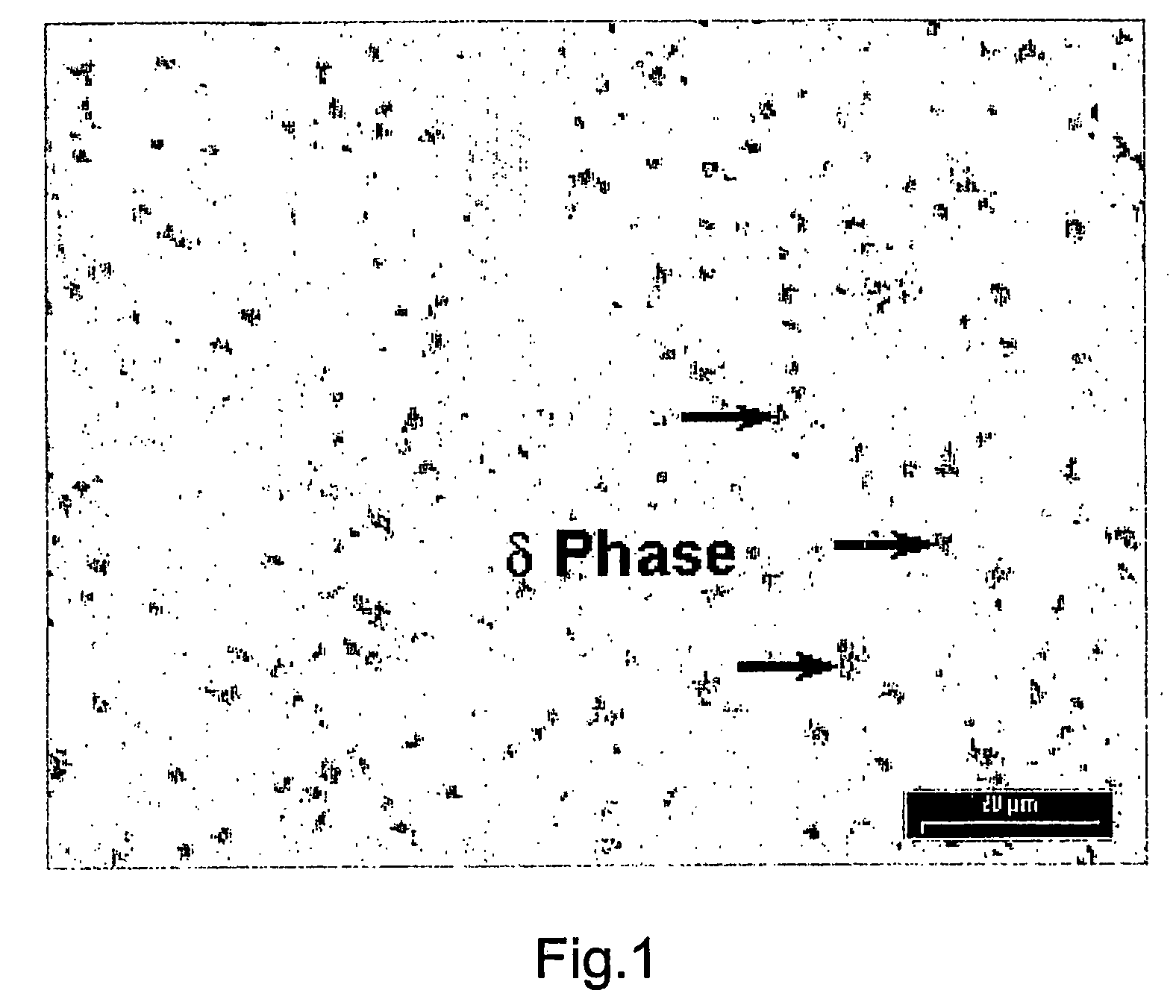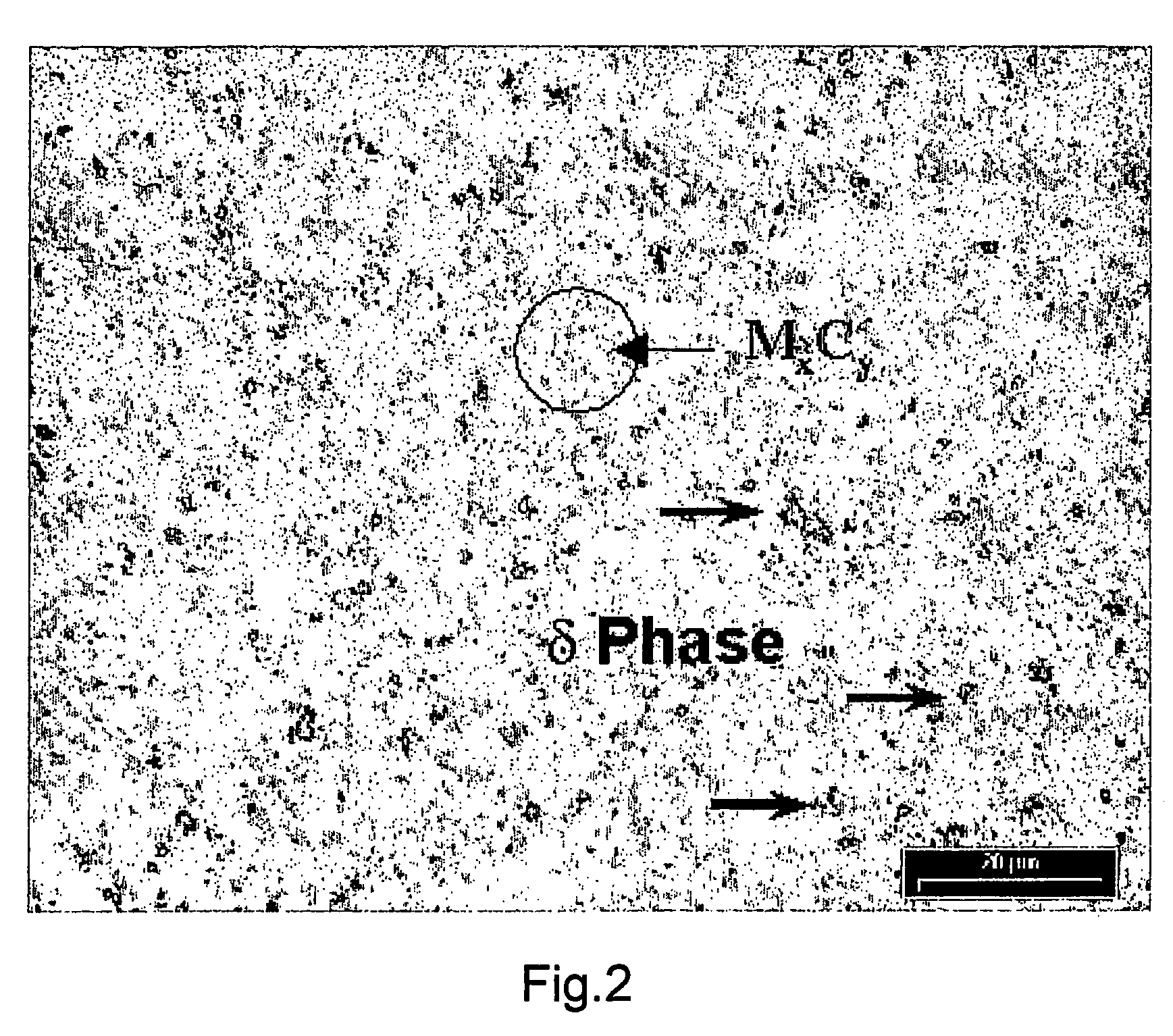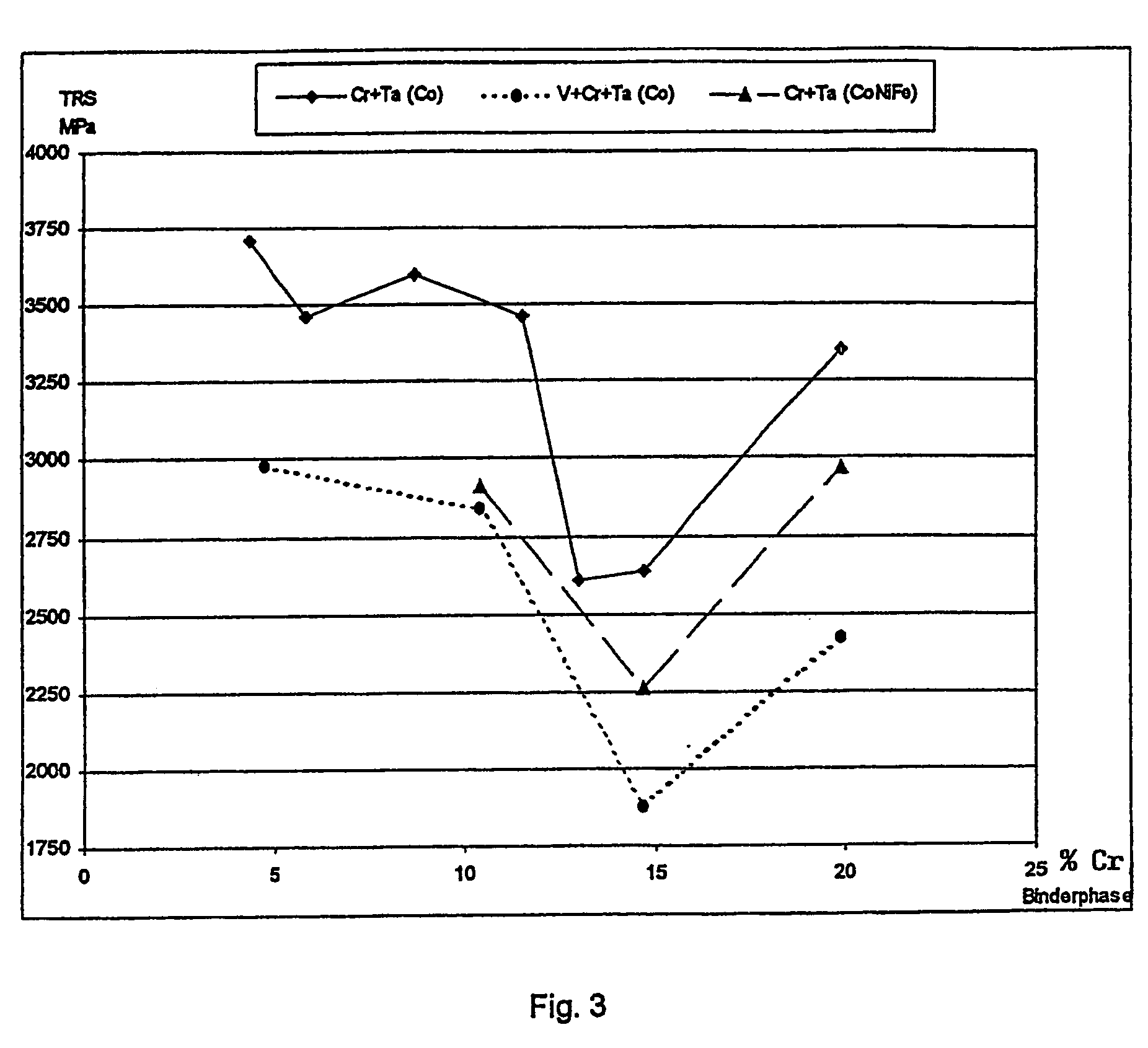Fine grained sintered cemented carbide, process for manufacturing and use thereof
- Summary
- Abstract
- Description
- Claims
- Application Information
AI Technical Summary
Benefits of technology
Problems solved by technology
Method used
Image
Examples
example 1
[0065]Cutting inserts of the SPGN 120308F geometry were made from the X and Y powder blends and were subjected to a metal cutting test under the following conditions:[0066]Material of the workpiece to be cut: C45 steel[0067]Cutting speed: 100 m / min.[0068]Feed rate: 0.15 mm / revolution[0069]Depth of cut: 1.0 mm[0070]Coolant: none[0071]Result: The tool life of the cutting insert made from the X powder blend (prior art) amounted to 6.4 min. until a maximum possible wear of the flank face of 0.25 mm was reached, whereas the tool life of the cutting insert according to the invention made from the Y powder blend amounted to 9.6 min., which corresponds to a 50% increase.
[0072]Further cutting inserts of the SPGN120308F geometry, made from the X and Y powder blends, were subjected to a high temperature hardness test under the following cutting conditions:[0073]Material of the workpiece: 50 CrV4 chrome vanadium steel[0074]Cutting speed increasing from 80 to 120 m / min. in increments of 10 m / min...
example 2
[0082]Drills were manufactured from the V and W powder blends, only W leading to a sintered cemented carbide in accordance with the invention. The drills had a diameter of 8.5 mm, met the DIN 6537K standard [German Institute for Standardization] and were of the SE-B221 type. They had a PVD coating of TiN.
[0083]These drills were used for drilling under the following conditions:[0084]Material of the workpiece: 42CrMo4V type chrome molybdenum steel[0085]Cutting speed: 75 m / min.[0086]Feed rate: 0.21 mm / revolution[0087]Depth of hole: 30 mm[0088]Use of an external coolant: yes[0089]Results: The drills made from the sintered cemented carbide in accordance with the invention (material W) could be used to drill 2088 holes up to a wear of 0.15 mm.
[0090]Only 522 holes could be drilled using the conventional drills made from the material V, whereafter the cutting edge already featured chipped portions. This means an improvement of tool life by 1566 drilled holes, or 300%, which could be attaine...
example 3
[0091]Ball nose endmills having a diameter of 6 mm and each having a pair of cutting edges were manufactured from the I, J and M powder blends; the endmills had a PVD coating of TiAIN. They were used for working under the following conditions:
[0092]Workpiece material: No. 1.2379 steel, hardened up to a Rockwell C hardness of 55
[0093]Cutting speeds:[0094]120 m / min. up to a milling length of 32 m[0095]160 m / min, at a milling length of from 32 to 64 m[0096]200 m / min. at a milling length of from 64 to 118 m
[0097]Feed rate per cutting edge: 0.12 mm
[0098]Depth of cut: 0.10 mm
[0099]Width of cut: 0.10 mm
[0100]Coolant: none
[0101]Results:
[0102]
wear of flank face [mm] after:32 m64 m118 mMaterial I (prior art)0.070.080.13Material J0.030.050.07Material M0.060.090.10
[0103]These values also reveal a distinct improvement in the high temperature properties of the milling tools manufactured from the sintered cemented carbide in accordance with the invention in comparison with the conventional tools m...
PUM
| Property | Measurement | Unit |
|---|---|---|
| Grain size | aaaaa | aaaaa |
| Length | aaaaa | aaaaa |
| Length | aaaaa | aaaaa |
Abstract
Description
Claims
Application Information
 Login to View More
Login to View More - R&D
- Intellectual Property
- Life Sciences
- Materials
- Tech Scout
- Unparalleled Data Quality
- Higher Quality Content
- 60% Fewer Hallucinations
Browse by: Latest US Patents, China's latest patents, Technical Efficacy Thesaurus, Application Domain, Technology Topic, Popular Technical Reports.
© 2025 PatSnap. All rights reserved.Legal|Privacy policy|Modern Slavery Act Transparency Statement|Sitemap|About US| Contact US: help@patsnap.com



